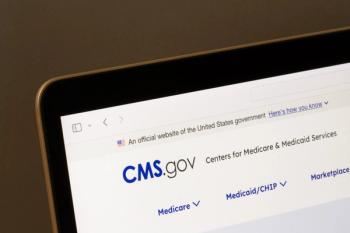
- Drug Topics September 2019
- Volume 163
- Issue 9
Patient Services are Crucial to the Economics of Pharmacy
Layoffs highlight increasing jobs problem.
Recent pharmacy
In community settings in particular, there are simply not enough open positions for all of the pharmacy graduates as well as those changing jobs due to layoffs and other reasons.
Some pharmacy experts and veterans blame DIR fees and other expenses that are harming pharmacies’ bottom line, while others say there are just too many retail pharmacies and not enough pharmacists qualified to work in specialty areas such as oncology and endocrinology.
Trending:
“Pharmacy as a whole is challenged by PBM tactics that interfere with pharmacists’ ability to treat patients and make it more difficult for pharmacies to stay afloat. In addition to expanding pharmacists’ scope of practice, reining in PBMs’ tactics would assist pharmacy’s decision-making about staffing abilities and whether to expand or even maintain a pharmacy business,” says
“Various players have been taking money out of the drug distribution system for many years, but it has been much worse in past two to three years largely, I believe, due to DIR fees,” says
In addition, the competitive landscape has changed over the last 25 years, according to Maine. “It’s possible that there wasn’t enough business to put a pharmacy on every corner [in certain cities]. And then you add in mail order… and online retailers have dented [brick-and-mortar] business,” she says.
Pharmacy closures and staff layoffs can also be attributed to viewing pharmacists as only drug dispensers. “We haven’t yet developed the consistent patterns of compensation for pharmacist services-the value-added services that pharmacists can and should be providing the public,” Maine says.
Plus, the demand for pharmacist and tech jobs, and the required pharmacy schools to train them, has boomeranged the shortage of pharmacists in 2000. The pace of new school openings between 2001 and 2018 was “dizzying,” including the establishment of multiple satellite sites and branch campuses, Maine
Read More:
The
Some pharmacy school graduates were so upset about their job prospects after graduation that they urged the public to sign a petition, “Halt New PharmD Accreditation to 2030.” It was signed by almost 10,000 additional petitioners in just a week, Maine says.
“The fundamental premise is that the job market for pharmacists can no longer accommodate the number of PharmD graduates. They specifically asked the American Association of Colleges of Pharmacy, the Accreditation Council for Pharmacy Education, and the American Pharmacists Association to take action to prevent the opening of more new schools,” Maine writes in the commentary.
The petitioners’ request is not legally defensible, Maine says. Instead, pharmacists need to be reimbursed for the services they provide. More pharmacists are being reimbursed via insurers that recognize how pharmacists prevent future health problems and thereby save the plans a significant amount of money.
Physicians want specialists, such as clinical pharmacists who specialize in endocrinology.
Solutions to the Jobs Crisis
“NCPA strongly advocates for greater pharmacist involvement in health care, along with appropriate levels of compensation. Not only does this improve health outcomes and help address patients’ potentially unmet health needs, it also can lead to additional opportunities for pharmacists and pharmacy students,” Pivarunas says.
The need for pharmacists and additional health care providers will only grow as the American population continues skewing older-and, consequently, more ill-particularly in communities that are already underserved, Pivarunas adds.
Trending:
There is an increasing amount of revenue from services such as vaccinations and medication management that community pharmacies could appropriately take advantage of-when staffed appropriately, according to Maine. “There is payment available for [some services, but it is not being done consistently. And, if the pharmacist is not all alone for a 12-hour shift and with very little tech help, they could take advantage of [those revenue streams].”
NCPA encourages community pharmacies to consider joining CPESN USA, which is comprised of local networks of pharmacies providing enhanced services that partner with health plan sponsors seeking to better manage their overall healthcare costs.
“More than 2,000 pharmacies have come together to participate in these local networks, and the number is growing as more and more pharmacies look to be rewarded for providing cost savings and quality value beyond dispensing,” Pivarunas says.
Meanwhile, NCPA and the NCPA Foundation have established the annual Good Neighbor Pharmacy NCPA Pruitt-Schutte Student Business Plan Competition to help prepare tomorrow’s pharmacy entrepreneurs for a successful future. “The goal of this competition is to motivate student pharmacists to create the blueprint necessary for buying an existing independent community pharmacy or developing a new pharmacy,” Pivarunas says.
Webinars and workshops, such as NCPA Innovation Center’s Ownership Workshop, can also facilitate networking opportunities and outline pathways to pharmacy ownership and management. “NCPA’s advocacy efforts and business education programs are aimed at growing the number of independent pharmacies, helping to create more jobs for future pharmacists,” Pivarunas says.
Articles in this issue
about 6 years ago
Biosimilars: Some Call for ‘Cautious Optimism’about 6 years ago
Biosimilars Need Access and Cost Examinationsabout 6 years ago
The Latest Autoimmune Disease Treatment Advancesabout 6 years ago
Unique Offerings Increasing Revenueabout 6 years ago
The Growing Problem of Pharmacy Desertsabout 6 years ago
What is a Pharmacy Desert?about 6 years ago
New Video Marketing Toolsabout 6 years ago
Antimicrobial Stewardship: Protecting Global Healthabout 6 years ago
Antibiotic Counseling Pearls for the Community SettingNewsletter
Pharmacy practice is always changing. Stay ahead of the curve with the Drug Topics newsletter and get the latest drug information, industry trends, and patient care tips.





















































































































































